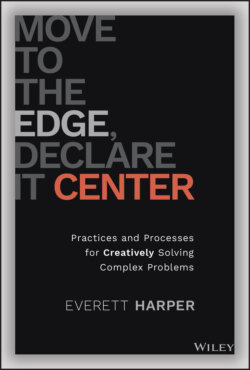Читать книгу Move to the Edge, Declare it Center - Everett Harper - Страница 12
Complicated Problems
ОглавлениеComplicated problems consist of elements whose behaviors and interactions are more well‐understood, often linear, and therefore predictable. For example, let's say you want to build a passenger jet. If you have a plan, hire expert designers, gather builders, and have enough money, you'll probably succeed in building a jet. Even though building a jet is neither simple nor cheap, the relationships between all the parts and labor are well understood. When there is a complicated problem to solve, such as how to reduce the cost of making a jet, the best approach is to optimize those predictable relationships. Sourcing the same rotor from a cheaper supplier, standardizing quality measurements, or negotiating for lower labor wages are logical approaches to solving the complicated problem of reducing costs. Great operational leaders focus on building with efficient, measurable, repeatable execution.
This is an advanced version of a model that emerged out of Fredrick Taylor's scientific management in the late nineteenth century.1 Taylor did “time and motion” studies of workers in factories, creating scientific models that included workers as part of the equation. The promise was that one could develop a scientific equation with a right answer, enabling managers and owners to operate factories in predictable, measurable ways. Eventually known as Taylorism, this approach to measuring production ushered in the assembly‐line system used to manufacture goods in the early twentieth century. Over the next hundred years, it influenced all sorts of work, from retail to software production. As this became more widespread, military leaders, business schools, and management consultants developed operational and leadership models of productivity to accompany Taylor's approach. The command‐control, optimize and execute, hierarchical organizational models derived from the understanding of problems as complicated. There was a right answer, and the most admired leaders had it.
Taylorism produced some obvious fallacies, especially with the rise of professions where people were paid primarily to think, as opposed to assemble. The shift to knowledge work made using complicated methods like time‐and‐motion equations to judge productivity less useful. For example, it's hard to imagine that the effectiveness of the famous 1959 “Think Small” Volkswagen Beetle advertising campaign2 could have been calculated with a linear productivity equation that measured words per copywriter. Other fields, from management consulting, to design, computer science, and software development, defied previously valid assessments of productivity, quality, or value, based on Taylor's time‐and‐motion models.
1959 “Think Small” Volkswagen Beetle advertising campaign
Source: Bill Bernbach’s iconic ‘Think Small’ Volkswagen Beetle ad. Martin Schilder Groep/Flickr, CC BY‐NC‐SA
Early in my career, I was advised to come early to the office and stay late, not because it would produce better work but because I would be regarded as a highly productive, committed, hard worker. I watched colleagues walk the halls, wearing their “I'm working hard” face, coincidentally timed for their manager to see them as they arrived at the office. Today, part of the debate about working from home versus returning to the office is framed as, “How do I know my employees are working?” This leads to misplaced choices like measuring how long employees are at their computers or in virtual meetings, instead of measuring the outcomes of their work. This is a manifestation of the complicated model of productivity, where there is a linear relationship between time in office and “This is good” work. In contrast, what is now being considered as “the future of work” is that global, hybrid, knowledge work doesn't assume a building – it enables us to think in new ways about defining work with purpose and impact.
